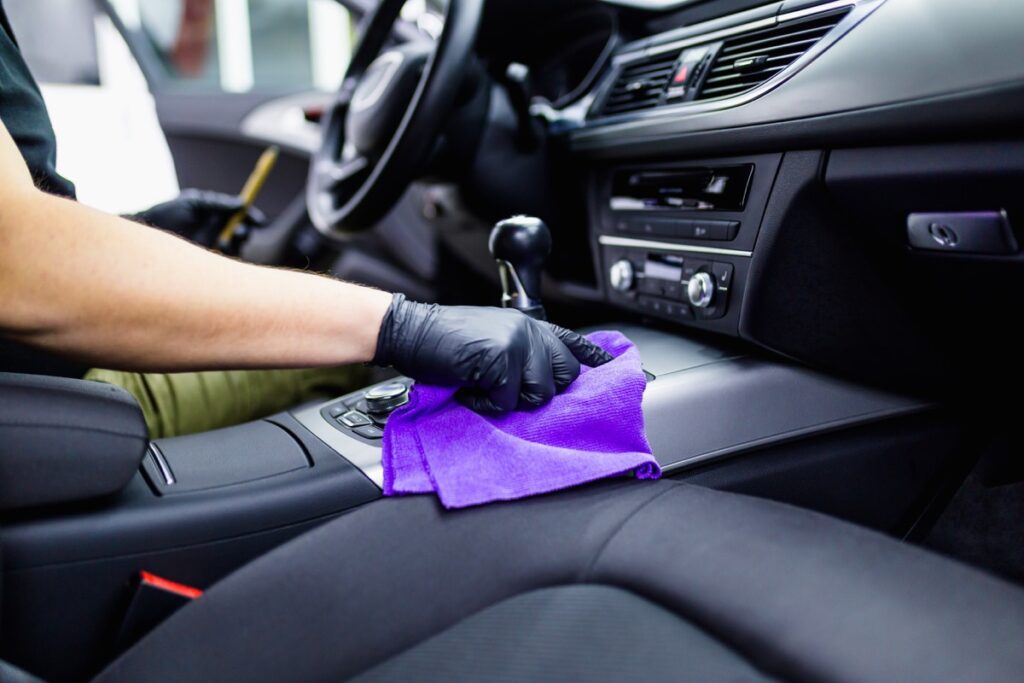A Comprehensive Guide to Removing Smoke Odors from Your Car
The unpleasant and stubborn smell of smoke that clings to the interior of your car. And, refuses to leave its new home. Whether it's the remnants of a long road trip with a smoking friend or a previous owner's habits. The lingering smoke odor can be an unwelcome companion on your daily commute.
But fear not, we have a solution to make your car odor free. We will discuss a step-by-step process to help you banish the persistent smoke smell from your car. This is going to enhance your driving experience. But it can also significantly improve your vehicle's resale value. Removing that pesky smoke odor is a journey that requires dedication and the right tools. So, let's get started on the road to a fresh and clean car interior.
Cleaning the Interior
When it comes to eliminating the stubborn smoke smell from your car. A fundamental starting point is to ensure you're working with a clean slate. This involves removing any potential sources of odor. And, preparing for effective car odor removal methods. Let's break down this crucial step into three key actions:
Starting with a Fresh New Beginning
Start the cleaning process by making sure your car is clutter-free and as clean as possible. This isn't just about aesthetics; a cluttered car can trap odors. And make it more challenging to address the underlying issue. Clear the seats, floors, and surfaces, and be thorough in your approach.
Removing Trash, Ashtrays, and Cigarette Butts
The next step is to remove any items that may be directly contributing to the smoke smell. If there's an ashtray in the car, empty it and clean it thoroughly. Discard any cigarette butts or other smoking-related remnants. Don't underestimate the impact of even small traces of tobacco and ashes.

Washing and Cleaning All Surfaces
Once you declutter and vacuum the interior of your car. The next critical step is to thoroughly clean all the hard surfaces. This includes the dashboard, steering wheel, and door panels. Also clean any other non-fabric areas that may have absorbed the smoke odor. Here's how to effectively tackle this task:
Cleaning Hard Surfaces with a Water and Vinegar Solution
To begin, gather the necessary cleaning supplies. You have two primary options:
- Water and vinegar solution.
- Specialized automotive interior cleaner.
Water and Vinegar Solution:
Mix equal parts of water and white vinegar in a spray bottle. This solution is effective at cutting through smoke residue and odors. It's a natural and cost-effective choice.
Automotive Interior Cleaner:
An Alternative, you can opt for a commercial automotive interior cleaner. These products are specifically designed to clean and rejuvenate car interiors. Making them effective for eliminating smoke residue.
Focusing on Key Areas
When cleaning, concentrate your efforts on the areas most prone to absorbing smoke. And, where you frequently come into contact with the car's interior:
Dashboard: Gently spray your chosen cleaning solution onto the dashboard. Use a microfiber cloth or a soft sponge to wipe it down. Pay special attention to the air vents, knobs, and any electronic screens.
Steering Wheel: Wipe the steering wheel, make sure you get into the nooks and crannies. If it's leather or has leather trim, use a leather cleaner that is specially made to clean steering wheels.
Door Panels: Clean the door panels, including the armrests and handles. Smoke residue often accumulates here due to constant contact.
Shampooing the Upholstery
If the smoke odor persists after cleaning the hard surfaces and vacuuming. It's time to tackle the next level of odor removal: shampooing the car's upholstery. This process can be particularly effective at eliminating deeply embedded. Odors in the seats and carpets. Here's how to do it:
Shampooing Car Seats and Carpets
DIY Approach: Gather the Necessary Supplies:
You'll need a quality shampoo or cleaner, A bucket, a soft-bristle brush, and a wet/dry vacuum cleaner.
Preparation:
Remove the car seats if possible to provide easier access to the carpets. Ensure the seats and carpets are dry before you begin.
Spot Test: Before applying the shampoo, perform a spot test in an inconspicuous area. To ensure the product doesn't damage the upholstery or fabric.
Application: Apply the upholstery shampoo as directed on the product label. Generally, it involves diluting the shampoo in water and using it. A cloth or sponge to gently scrub the seats and carpets.
Scrubbing: Use a soft-bristle brush to work the shampoo into the fabric. Pay attention to stained or heavily affected areas. Be gentle to avoid damaging the upholstery.
Rinsing: After scrubbing, use a clean, damp cloth or sponge to wipe away excess shampoo.
Vacuuming: Use a wet/dry vacuum cleaner to remove the remaining moisture and shampoo. Make sure to thoroughly vacuum the entire interior.
Drying: Allow your car to air dry with windows down or doors open to speed up the drying process. Ensure all moisture is gone to prevent mold growth.

Professional Detailer:
If you prefer to leave this task to the auto odor removal experts. Hiring a professional auto detailer is a viable option. They have specialized equipment and expertise in deep cleaning car interiors. They can remove the car seats and deep-clean all upholstery. They will ensure that no smoke odor lingers.
Benefits of Shampooing
Shampooing the upholstery goes beyond just cleaning. It can help eradicate odors at their source. Smoke particles often penetrate deeply into fabric and foam. Shampooing is an effective way to reach and remove these hidden odors. It's particularly useful if the car has a strong, persistent smoke smell.
Replacing the Cabin Air Filter
One often overlooked but crucial element of smoke odors in your car is the cabin air filter. This filter plays a significant role. In maintaining the quality of air inside your vehicle.
Using Air Fresheners
In your quest to banish the stubborn smoke smell from your car, air fresheners can be valuable allies. These aromatic companions don't just mask odors they can help infuse your vehicle. With pleasant scents and provide a much-needed breath of fresh air.
Ventilation:
Ventilation is often a basic way to freshen up the air quality inside your car.
The Role of Ventilation
Ventilation is the process of replacing the air inside your car with fresh outdoor air. This natural method is essential for reducing and eventually eliminating lingering smoke odors. Here's why ventilation matters:
Rolling Down the Windows
Rolling down the windows is one of the simplest and most effective ways to ventilate your car. This action allows for the circulation of fresh, outdoor air throughout the cabin. Diluting and removing the odorous particles that have settled.
Sunroof or Moonroof
If your car is equipped with a sunroof or moonroof, consider opening it. This adds a further exit point for the smoky air and enhances the airflow within the vehicle.
Avoid Recirculating Air
Be mindful of your car's ventilation settings. Avoid using the "recirculate" or "max A/C" setting, which merely recycles the interior air. Instead, opt for the "fresh air" setting to introduce outside air into the cabin.
Park in the Shade
On hot days, the heat inside your car can intensify any lingering odors. Whenever possible, park in the shade to keep the interior temperature down. This will make the ventilation process more comfortable and efficient.
Fresh Air Intake
While driving, set your car's HVAC system to the "fresh air" setting. This ensures a continuous influx of outdoor air into the vehicle. It will help the reduction of odors.
Be Patient and Persistent
Remember that effective ventilation takes time. The process of replacing odorous air with fresh air can be gradual. Especially, if the smoke odor is deeply embedded. Be patient and combine ventilation with other odor removal methods for best results.
Repeat as Necessary
Depending on the severity of the smoke smell, you may need to repeat some of these steps a few times. Remember, it may take some time for the smell to completely dissipate. Be patient and persistent in your efforts to remove the smoke odor from your car. Additionally to prevent the smell from returning. Avoid smoking in the car in the future and take steps to keep it clean and well-ventilated.






